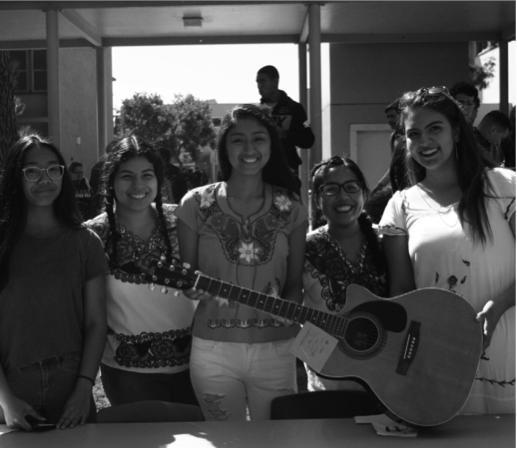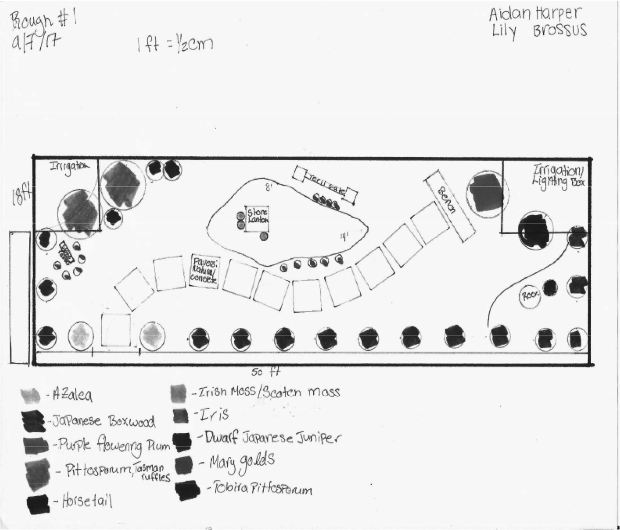On April 23, 2013, 42-year-old Christopher Waters was murdered, and it hasn’t been until recently that the trial for the alleged perpetrators began.
In a phone interview, Deputy District Attorney Brian Kang said the crime scene was discovered shortly after the murder took place.
“The police were notified, and the fire department were notified of a fire that was happening in Rancho Palos Verdes,” Kang said. “When the fire department arrived, they found that on a private property that had a basketball court on it was [an] SUV that was on fire. The homeowner, you know, didn’t know where the SUV came from. They put out the fire, and when they put out the fire, they found that in the back of it was a human body.”
According to Kang, police were notified after the fire department found the body, and the homicide detectives began their investigation.
“What they found through the investigation,” Kang said, “was that there were two Long Beach Poly students who were involved.”
Kang explained that one of the students was 18 years old at the time and considered an adult, while the other was 17 years old and considered a minor.
The adult was Jose Angel Martinez. The Press Telegram and the LA Times have reported that the minor, who was originally charged as an adult, was Angel Beruman. At the time, both were seniors at Poly.
The crime was committed long before the burning SUV was discovered by the authorities, according to Kang.
“We found out that the crime actually occurred at the home of one of the two students,” Kang said. “They beat him, they strangled him, and killed him.”
Kang said that afterwards, the two drove the body to what they thought was a remote, private location and then burned the car with Waters inside.
According to an LA Times article, the minor went to the Long Beach Police Department (LBPD) to speak to the homicide detectives on Waters’ case. However, authorities were not able to comment on what he said during that time.
Deputy Los Angeles County District Attorney Diana Martinez explained that, after the minor spoke with the LBPD, the suspects were taken to county jail to be held until trial. However, if found guilty, they will be sent to state prison.
Kang said that the motive for the murder of Waters was robbery.
Poly health teacher Danielle Sawyer explained that one of the alleged suspects, Jose Angel Martinez, was in her AVID class for his first three years of high school.
“When I first had him freshman year, he was one of my smartest kids in the class,” Sawyer said. “He understood complicated concepts better than any other kid in my 9th-grade class. He was supreme in math and was usually ahead of his peers when it came to math, and he had a nice breadth of vocabulary for a 9th-grade student.”
Sawyer said that she noticed Martinez right away and was instantly impressed. However, she explained that he often downplayed his intelligence and would act as if he were the class clown.
Martinez and his family became close with Sawyer, and she explained the teacher-student-family relationship.
“I developed a really close relationship with [Martinez] because I was helping him in that way, but also developing a relationship with his dad,” Sawyer said. “His dad and I got really close, because I saw a different side of Jose, so I had a good relationship with his family, his teachers, and with him, and he was a really good kid.”
For Martinez’s senior year, he started a business, according to Sawyer.
“Senior year, he met another young man who is currently being tried for the same crime as a minor,” Sawyer said. “They started a business together, and they were doing really well. It was a graphic T-shirt design business, and Jose felt like it was really going somewhere. I know they were doing pretty good at it. Then, someone they were doing business with, their relationship went awry, and now they are at where they are at.”
Sawyer then went on to explain her reaction to the 2013 news at the time of the crime.
“[Martinez] came into my room a week earlier to print out a paper, and I was asking him about his life. I said that I hadn’t seen him in a couple of weeks, and he said everything was great,” she said. “Then, a week later, [the AVID students] heard before I did, and told me that he was arrested and what the potential crime was, and I cried when I heard about it, and when I cried, some of the other kids cried, because they were definitely Jose fans and were sad about what they heard.”
Martinez was one of Sawyer’s students, so she was able to speak on his behalf. However, Sawyer explained that she didn’t know the other student, and thus, she couldn’t do the same for the minor.
Though the crime took place in 2013, the trial phase of the investigation did not start until recently. Kang explained a few reasons as to why the trial has been delayed for the last four years.
“As prosecutors, what we do is we get the evidence from the police agencies, and then we turn that over to the defense,” Kang said. “Sometimes it gets delayed. I can’t speak to what happened before I got on the case, but when I got on the case there were a couple of different delays because either the defense attorneys were on trial or we would get new information, and once we got that new information, we would give it to the defense, then they have to have time to prepare the case.”
Kang explained that for the case it was important for the defense to have as much time and information as possible going into the trial.
The verdict has already been delivered for the adult defendant, Martinez, who was the suspect Kang prosecuted.
“One of the defendants, Mr. Martinez, he was convicted,” Kang said. “We are going to have sentencing in about a month and a half.”
As for the minor, Kang said that they have to go through a completely different process than Martinez had to undergo. “Before, I guess, a year ago or a year and a half ago, if a minor committed certain types of crime that met certain criteria, we used to be able to file directly in adult court,” Kang said. “So, what would happen is, we would file, even though the person is a minor, we would direct file because it’s how serious the crime is or some other factors.”
Initially, the minor was to be tried as an adult, however, after the passing Prop 57 in 2016, the minor’s case was moved to juvenile court which will decide whether he should be tried as an adult. Prop 57 states that the juvenile court has the right to decide whether a minor 14 years or older should be prosecuted in adult court or juvenile court.
This also explains why the two defendants’ cases had to be prosecuted separately, and it is one of the reasons why the adult defendant had a quicker trial.
Kang said that after he prosecuted Martinez, he was transferred and was no longer on the minor’s case.
Even though Kang is not on the juvenile’s case any longer, he stated that he thinks the trial’s end should be no sooner than six months from now.
Overall, Kang explained that the case has been sensitive for the Waters family, and the end is finally near after the four years of waiting for answers.
“I was just really glad to allow the family to get some measure of closure,” Kang said. “It’s been a long journey for them, and to allow justice to be served in a sense. In this case, it came very slowly, but we got there.”












